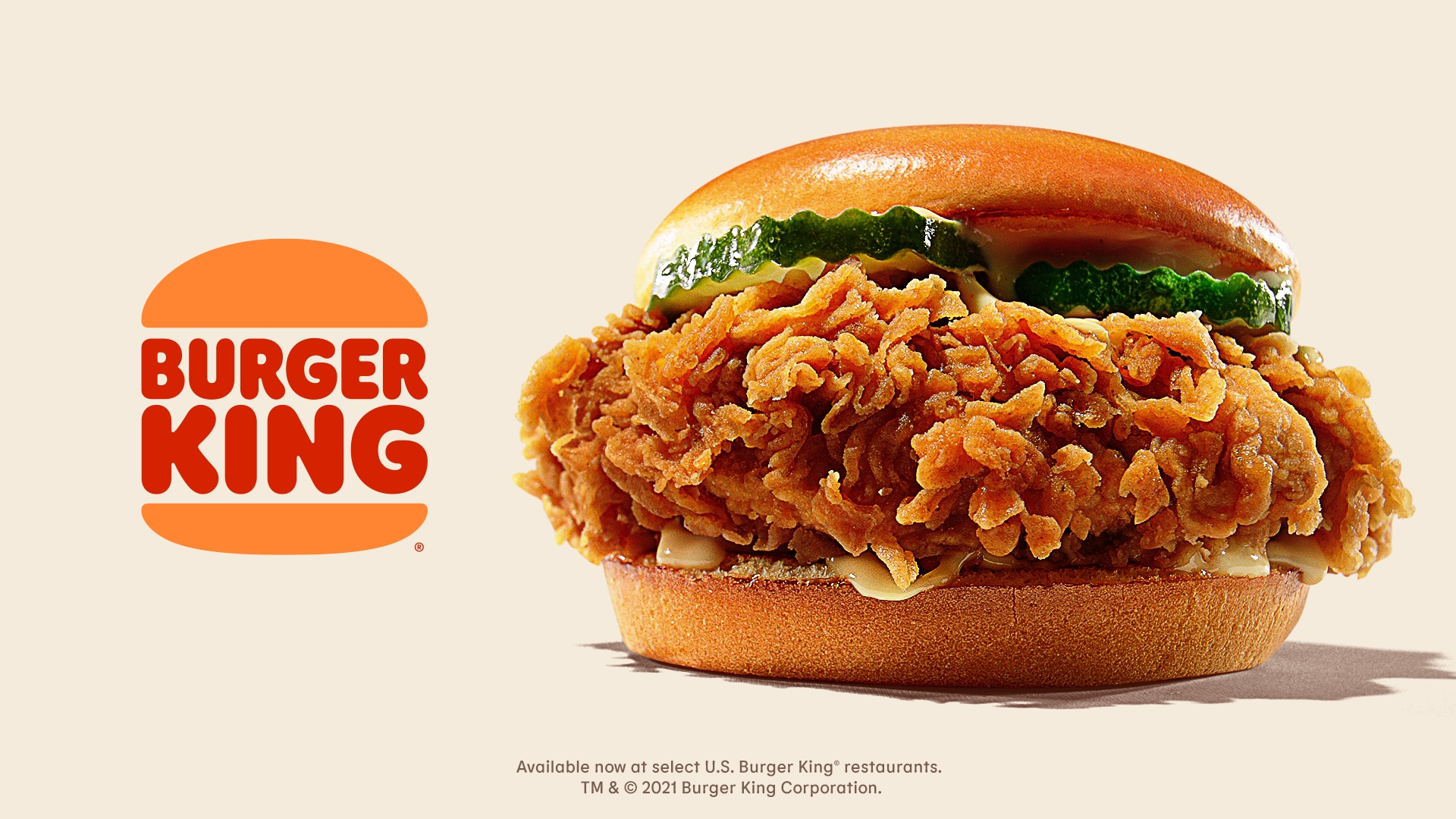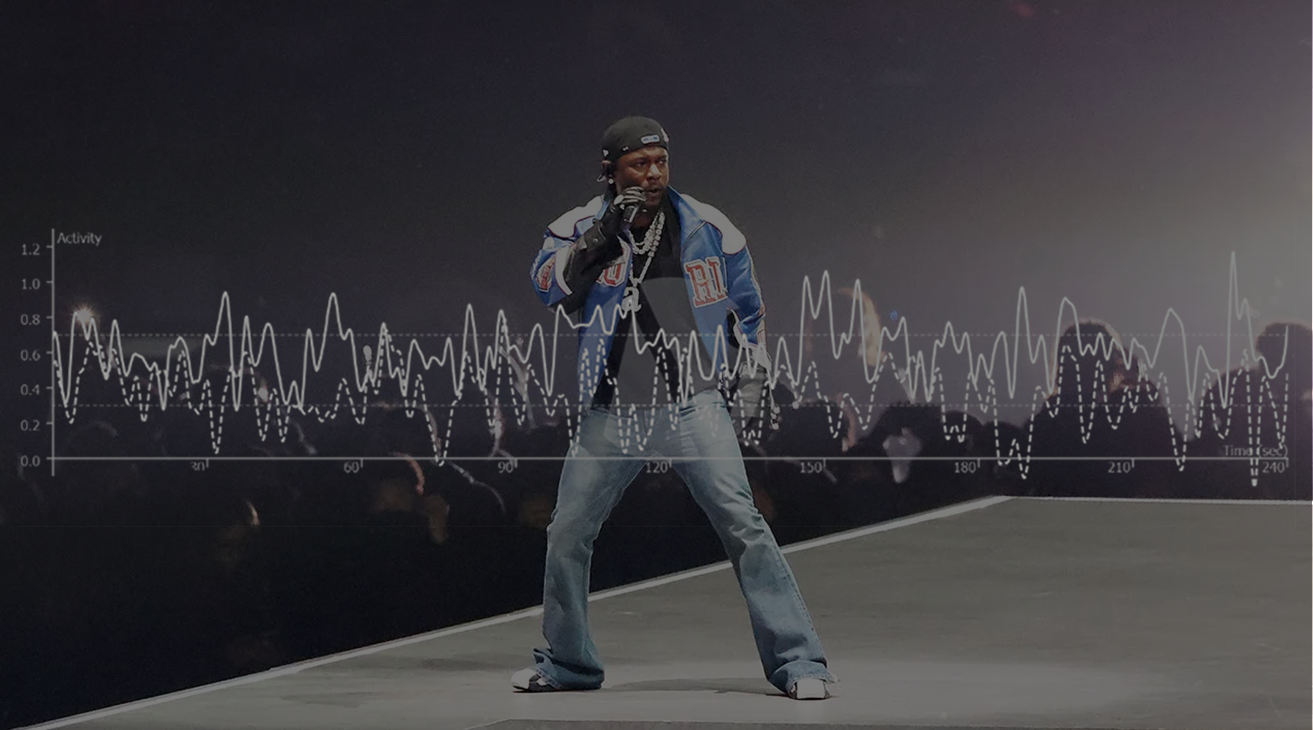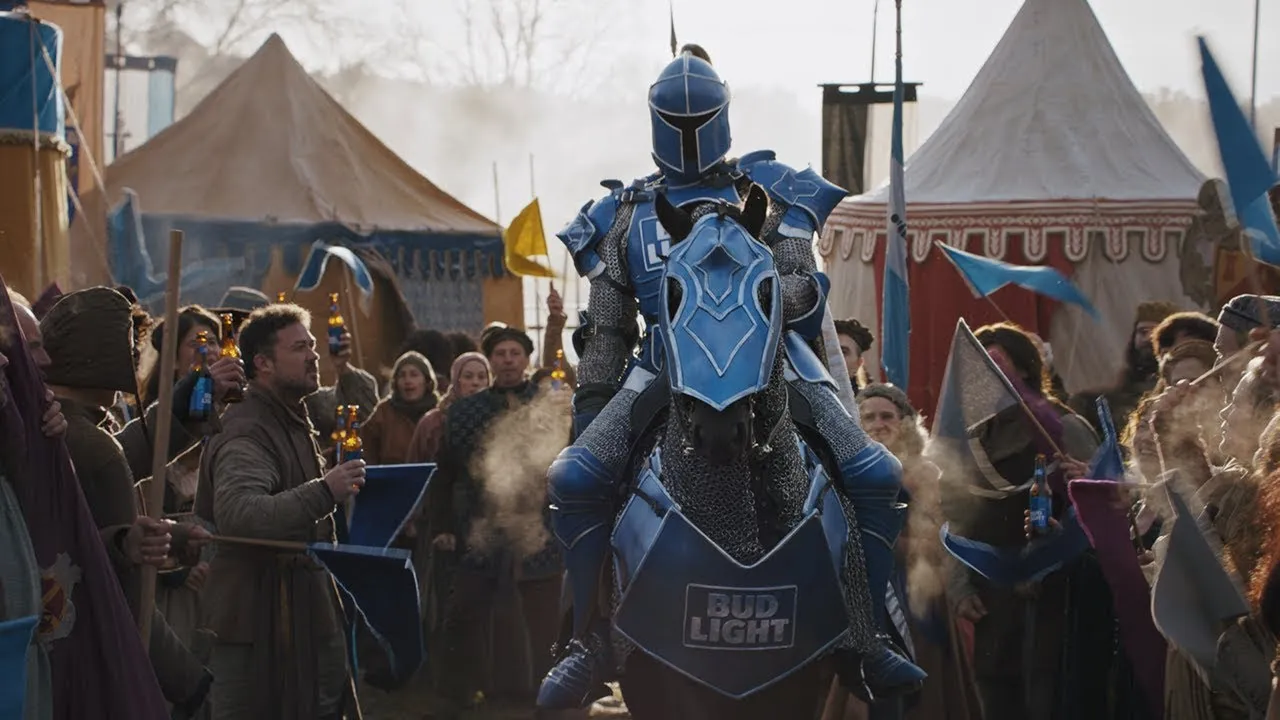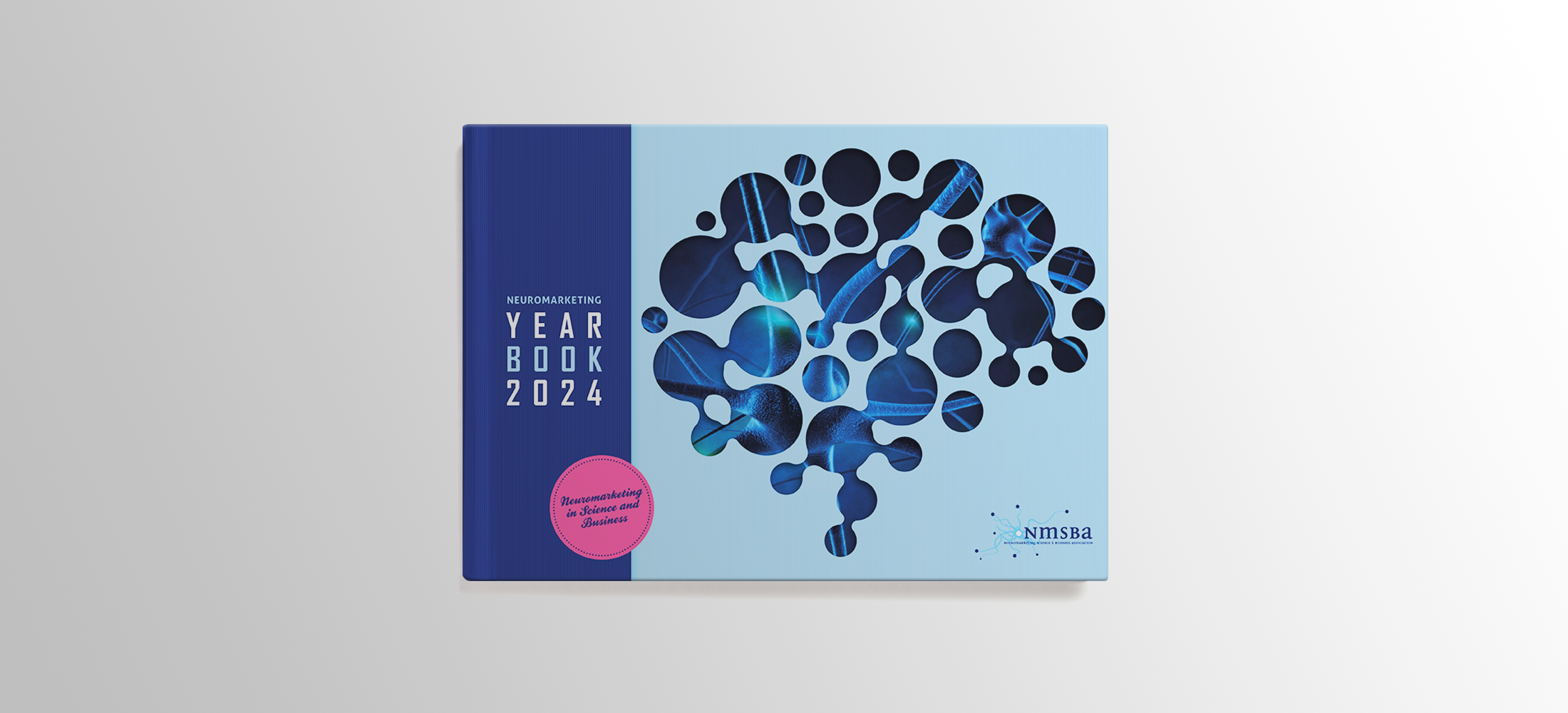Crispy, hand-breaded, saucy, and delicious. In 2021, Burger King released the Ch’King sandwich as a compliment to their beef-based burger menu. Social media exploded with love for the “GOAT” sandwich (greatest of all time), but one year later, the sandwich was taken off the menu and replaced with a new line of chicken sandwiches. Obviously, flavor wasn’t the problem, and the company had spent a fortune on broadcasting the new product (we all know how much money goes into product innovation at big-name fast-food chains… advertisement production, media buying, etc.). But, was Burger King’s advertising effective enough to influence consumers to buy the new chicken product?
At Neuro-Insight, we looked at clues hidden in consumers’ subconscious reactions to Burger King’s Ch’King Nightmare commercial to see how the company’s creative efforts impacted the success of the sandwich and lead to the death of the Ch’King.
Using our patented technology, Steady State Topography (SST), we measured second-by-second brain responses that breach the conscious and get to the root of human emotion and decision-making. Our most salient predictor of consumer behavior is memory. Memory matters because what we subconsciously decide to store in memory today becomes the basis for our decision-making in the future.
Memory can be global or detailed. In our analysis of the Ch’King Nightmare commercial, we found there was a serious global memory bias. Global memory encoding measures the consumer’s processing of thematic elements of a piece (the story, the characters, the music, the style). This means that, at large, Burger King was successful in creating a captivating drama and viewers responded to the horror and the absurdity. But if you zoom in, moment by moment, our brain data suggests that global memorability did not equate to global likeability.
For example, around the time the narrator asks, “Will this clucking nightmare end?”, consumers withdraw from the creative. Lean-out or withdrawal is a specific diagnostic metric we use to measure consumer aversion to ad content. It is typically prompted during scenes that cause anxiety and awkwardness or make viewers uncomfortable. In this moment of the Ch’King’s nightmare, actors in chicken masks crowd the screen, humans cluck, the narrator’s tone intensifies, and the lighting becomes ominous. The creepy chaos overwhelms the viewers, and they lean away from the screen.
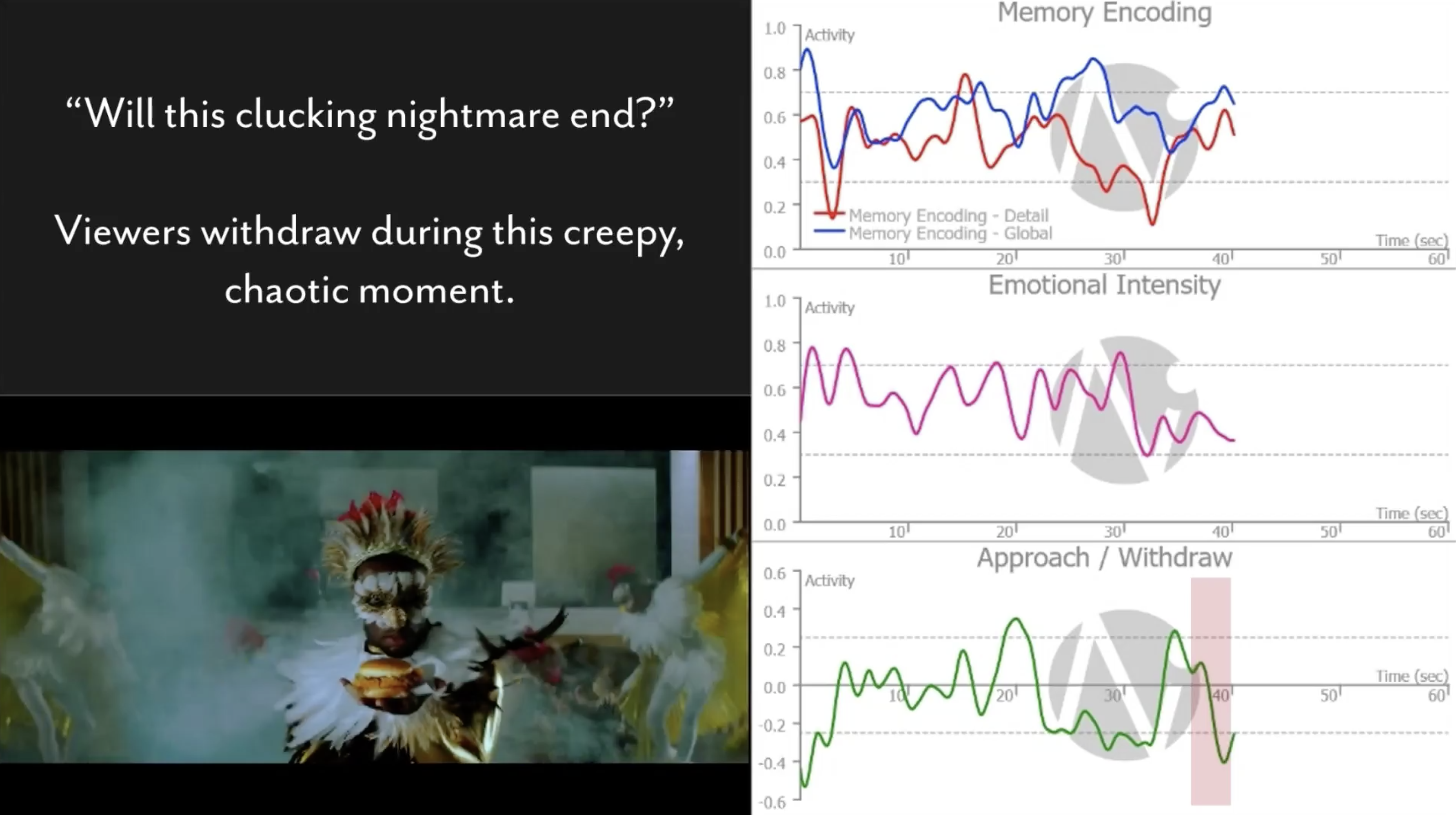
Moments later, emotional intensity — another Neuro-Insight diagnostic metric that measures the strength of viewer emotion — dramatically shoots up. The Ch’King falls through space and a haunting laugh echoes. This kind of brain data suggests that the viewers are worked up from the culminating chaos and having an adverse reaction to what they see and hear on screen.
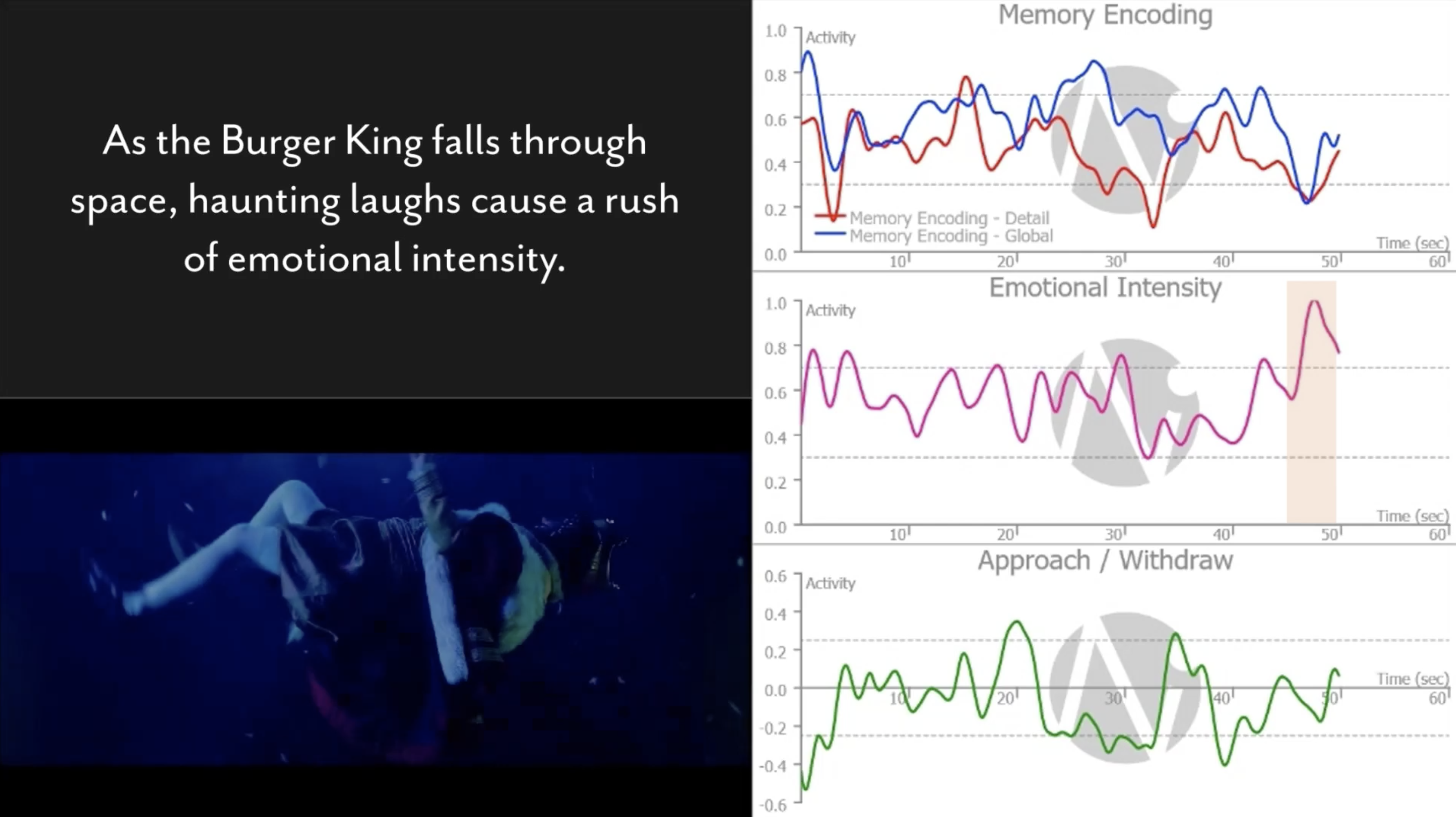
Both of these moments serve as an important reminder that creating an unorthodox, creepy creative is a fragile artform that can easily sway into the realm of distaste. An in-depth neuro analysis can allow creators and brands to optimize, remove, or change aspects of a piece during the production stage to ensure that global memorability coexists with a positive, lean-in response.
While it is obvious that Burger King had impactful theatrics with the release of the Ch’King Nightmare ad, we still had to find out whether or not viewers were remembering the sandwich itself, for no amount of feathers and clucking will make up for ineffective branding moments.
To answer this question, we investigated our other golden memory metric: detail memory encoding. Detail memory encoding measures consumer processing of key elements in an ad. High scores indicate a correlation between the information stored and a high likelihood of future action. Here, we see that detail memory peaks as the narrator first announces Burger King. This is a good sign… sonic branding comes through, but the best indicator of ad success is detail memory branding scores at end branding. Did the consumer leave with an encoded connection between the sandwich and the brand?
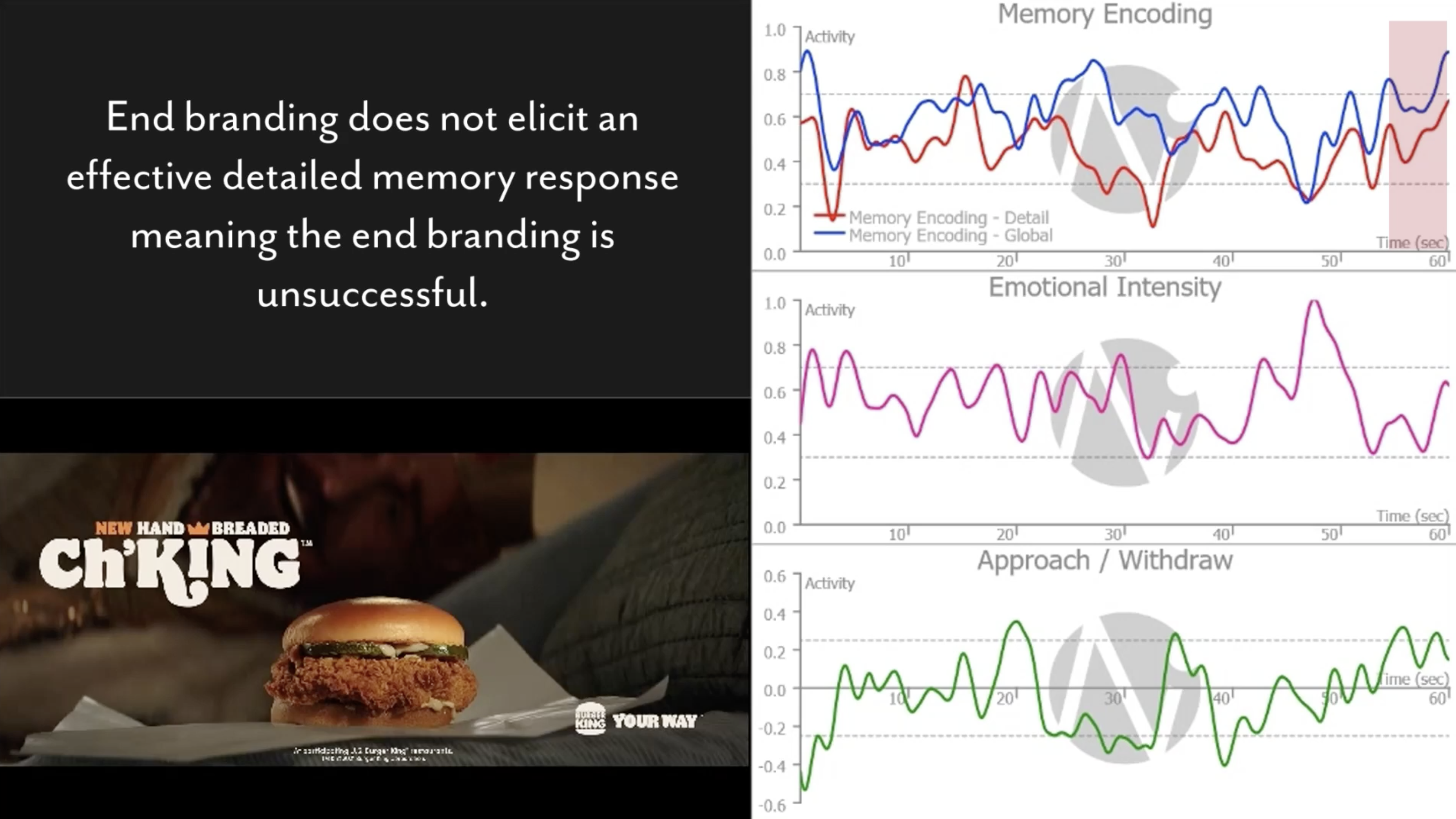
Unfortunately, that connection was not made. The end branding does not elicit any notable detail memory response meaning the final attempt to brand this as a Burger King / Ch’King ad was unsuccessful, and the sandwich was lost in the vast array of fast-food chicken sandwich options.
When a food item at a big-name fast-food chain its regarded for its taste but doesn’t produce adequate sales, it is important to investigate the success of the promotional push. At Neuro-Insight, we harnessed information from Burger King’s consumer subconscious to learn that a major Ch’King advertisement was a captivating story but did not make the necessary connection between chicken sandwich and brand. Perhaps, with creative refinements that made better use of a memorable narrative, Burger King’s Ch’King sandwich would have been remembered by a larger consumer population and wouldn’t have been lost in the sauce.

